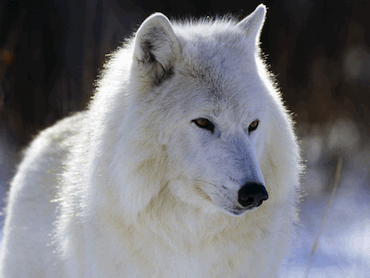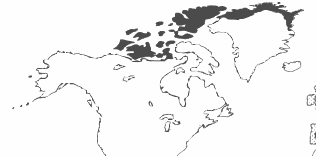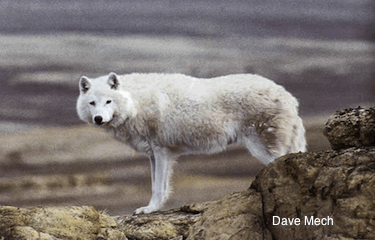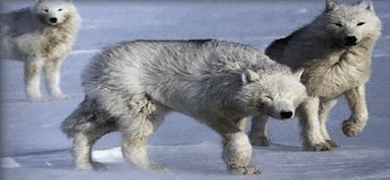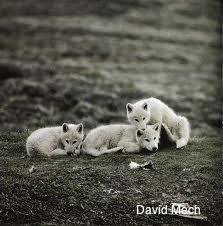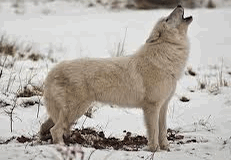|
The Arctic Wolf, Original Gang Member and Expert Hunter from the Land of Ice!
Their eyesight, hearing and sense of smell are very good. They have sharp teeth and strong jaws, all of which make them excellent hunters.
They are not super fast runners but what they lack in speed they make up for in stamina and endurance often outlasting the prey they are hunting. Their main prey are Caribou and Muskoxen however they will also hunt various Birds, Lemmings, Hares and Seals. Muskoxen will often form a circle protecting their young from the Wolves, but the Wolves will attack in packs and distract the mature Muskoxen until there is an opening and the Muskoxen herd is on the run. The Wolves can then move in, catch and kill the younger or weaker animals.
This usually takes place in late May or early June and one female can have up to 12 pups although 2 to 3 are the norm. Pups are born blind and deaf and are completely dependant upon the mother for food, shelter and protection. They grow fast and in just a few weeks will be outside the den and begin exploring the world for themselves.
A full grown adult male can tip the scales at over 175 lbs with an average life span of 7 years in the wild. In captivity the Polar Wolf has been known to live up to 17 years.
|
